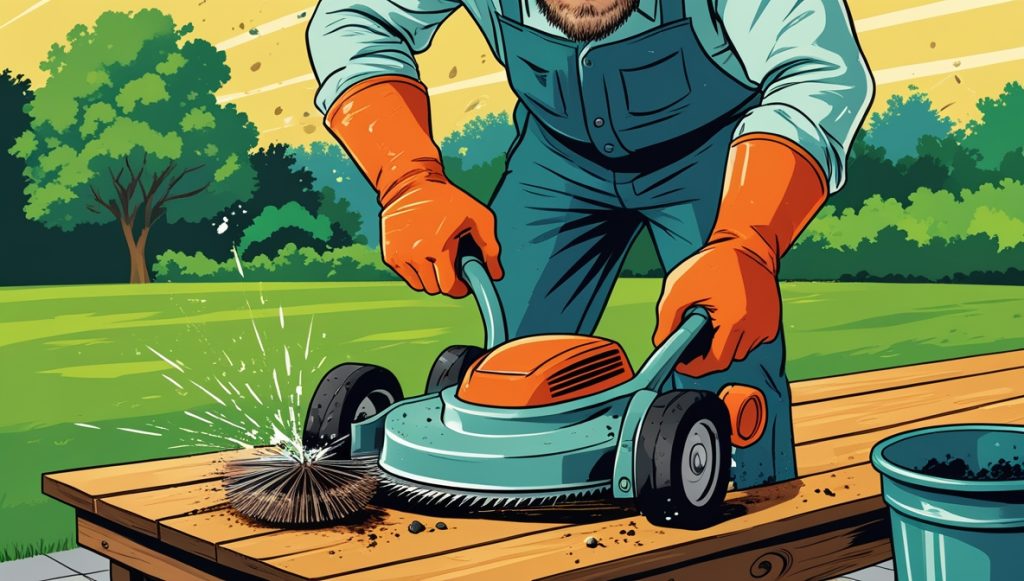Ready to transform your yard into a lush, green paradise? Installing St. Augustine sod is a fantastic way to achieve a beautiful lawn quickly. This guide walks you through the entire process, from planning to maintenance, ensuring you get the best results. Let’s get started on your {St. Augustine sod} installation project!
Contents
- Planning Your St. Augustine Sod Project
- Getting the Soil Ready: Prep Work
- Choosing and Ordering Your Sod
- Essential Tools for Sod Installation
- Laying the Sod: A Step-by-Step Guide
- Watering Your Newly Laid Sod
- Maintaining Your New Lawn’s Health
- Troubleshooting Common Problems
- Fertilizing and Pest Control Tips
- Enjoying Your Lush St. Augustine Lawn
Planning Your St. Augustine Sod Project
First, measure your lawn area to determine how much sod you’ll need. Remember to add extra for waste and uneven edges. Next, create a detailed plan, sketching out your lawn’s layout and considering any obstacles like trees, walkways, or sprinkler heads. This planning phase prevents costly mistakes and ensures a smooth installation. Furthermore, consider the time of year; spring and fall are generally ideal for sod installation in most climates, as the weather is milder and promotes better root establishment. Finally, check with your local municipality for any regulations or permits required before starting your project.
Secondly, think about the overall look you want to achieve. Will you have straight lines, curves, or a combination? Consider incorporating landscape features, such as flower beds or borders, to complement your new lawn. Also, plan your irrigation system now; proper watering is crucial for successful sod establishment. Lastly, set a realistic timeline. Factor in soil preparation, sod delivery, installation, and initial watering.
Getting the Soil Ready: Prep Work
Before laying any sod, you must prepare the soil. Begin by removing any existing grass, weeds, rocks, and debris. A thorough clearing will give your sod the best chance to thrive. Use a sod cutter or a sharp shovel to remove existing vegetation, going down at least 2-3 inches deep. This ensures that competing plants don’t hinder your new sod’s growth.
Next, level the soil using a rake and soil leveler to create a smooth, even surface. This prevents uneven settling and ensures consistent sod height. Amend the soil with compost or other organic matter to improve drainage and fertility. A healthy soil base is key to a thriving lawn. Finally, test the soil pH; St. Augustine grass prefers slightly acidic soil (pH 6.0-6.5). Adjust the pH accordingly using lime or sulfur if necessary.
Choosing and Ordering Your Sod
Now comes the exciting part: selecting your St. Augustine sod. Choose a reputable sod farm that provides high-quality sod grown locally. This ensures the sod is well-suited to your climate and reduces the risk of stress during transportation and installation. Inquire about different varieties of St. Augustine grass; some are more disease-resistant or drought-tolerant than others, based on your specific needs.
Furthermore, order your sod well in advance of your planned installation date. Sod farms often have busy periods, so early ordering guarantees availability. Confirm the delivery date and time with the sod farm and ensure you’re available to receive the delivery. Finally, calculate the amount of sod you need based on your measurements, adding extra for waste. It’s better to have a little extra than to run short.
Essential Tools for Sod Installation
Before you begin, gather the necessary tools. You’ll need a measuring tape, shovel, rake, sod cutter (optional, but helpful), and a garden hose with a sprinkler. A wheelbarrow is also extremely useful for moving sod and soil. These basic tools will make the installation process much more efficient and less strenuous.
In addition to the basics, consider using a soil tamper or roller to ensure proper soil compaction after laying the sod. This helps to establish good contact between the sod and the soil, promoting root growth. Sharp utility knife or shears are also helpful for trimming sod to fit around obstacles. Finally, protective gear like gloves and sturdy footwear are essential to prevent injuries.
Laying the Sod: A Step-by-Step Guide
Start laying your sod in a straight line, working your way across the lawn. Place the sod pieces tightly together, avoiding gaps. Stagger the seams, much like laying bricks, to create a strong and even lawn. This technique prevents weak points and ensures a uniform appearance.
Next, use a sod cutter or sharp shovel to cut the sod to fit around curves, edges, and obstacles. Avoid stretching or bending the sod, as this can damage the roots and hinder establishment. Gently press the sod down to ensure good soil contact. Finally, use a soil tamper or roller to compact the sod and ensure it settles evenly.
Watering Your Newly Laid Sod
Immediately after laying the sod, water thoroughly. This helps to settle the sod and promote root growth. Use a gentle spray to avoid washing away the soil. Keep the sod consistently moist for the first few weeks. This is crucial for successful establishment.
Furthermore, water deeply but infrequently. Shallow, frequent watering encourages shallow root growth, making the lawn more vulnerable to drought. Adjust your watering schedule based on weather conditions and soil type. Monitor the soil moisture regularly and water when the top inch of soil feels dry. Finally, avoid overwatering, as this can lead to fungal diseases.
Maintaining Your New Lawn’s Health
Once your sod is established, regular maintenance is key to keeping it healthy and vibrant. Mow your lawn regularly at the correct height, typically 2-4 inches for St. Augustine grass. This encourages healthy growth and prevents thatching. Sharp mower blades are essential to prevent tearing the grass blades.
Moreover, aerate your lawn periodically to improve drainage and air circulation. This helps prevent thatch buildup and promotes healthy root growth. Remove thatch as needed to prevent disease and improve water penetration. Finally, regularly inspect your lawn for pests and diseases and address any issues promptly.
Troubleshooting Common Problems
Despite your best efforts, you might encounter some problems. Uneven settling is common; address this by adding more soil to low spots. Brown spots can indicate insufficient watering or disease; adjust watering and treat any diseases promptly. Weeds may appear; remove them promptly to prevent competition.
Additionally, pests like chinch bugs can damage your lawn. Identify and treat pests with appropriate insecticides or other control methods. Grubs can also cause damage; use appropriate treatments to control their population. Finally, if you notice significant discoloration or dieback, consult with a lawn care professional for diagnosis and treatment.
Fertilizing and Pest Control Tips
Fertilize your St. Augustine sod according to the recommended schedule for your region. Over-fertilizing can lead to problems, so follow instructions carefully. Use a fertilizer formulated for St. Augustine grass. This ensures the grass receives the nutrients it needs to thrive.
Furthermore, implement a preventative pest control program to protect your lawn from common pests. Regular inspections can help you detect problems early. Use appropriate insecticides or other control methods only when necessary. Finally, consider using organic pest control methods whenever possible to minimize environmental impact.
Enjoying Your Lush St. Augustine Lawn
With proper planning and care, you’ll soon be enjoying the beauty of your new St. Augustine lawn. Relax and admire your hard work. Regular maintenance will keep your lawn looking its best for years to come. Enjoy the vibrant green space and the increased curb appeal it brings to your home.
Installing St. Augustine sod can seem daunting, but with careful planning and attention to detail, you can achieve a stunning lawn. Remember, consistent maintenance is key to long-term success. So get out there and enjoy the process of creating your own green oasis!






